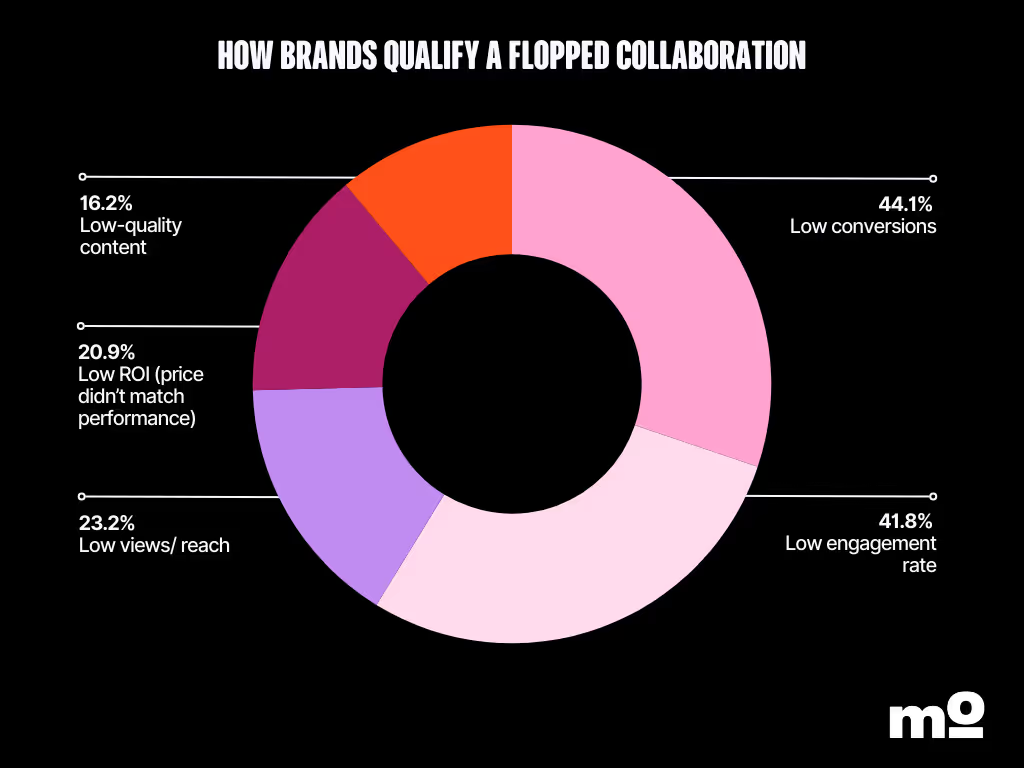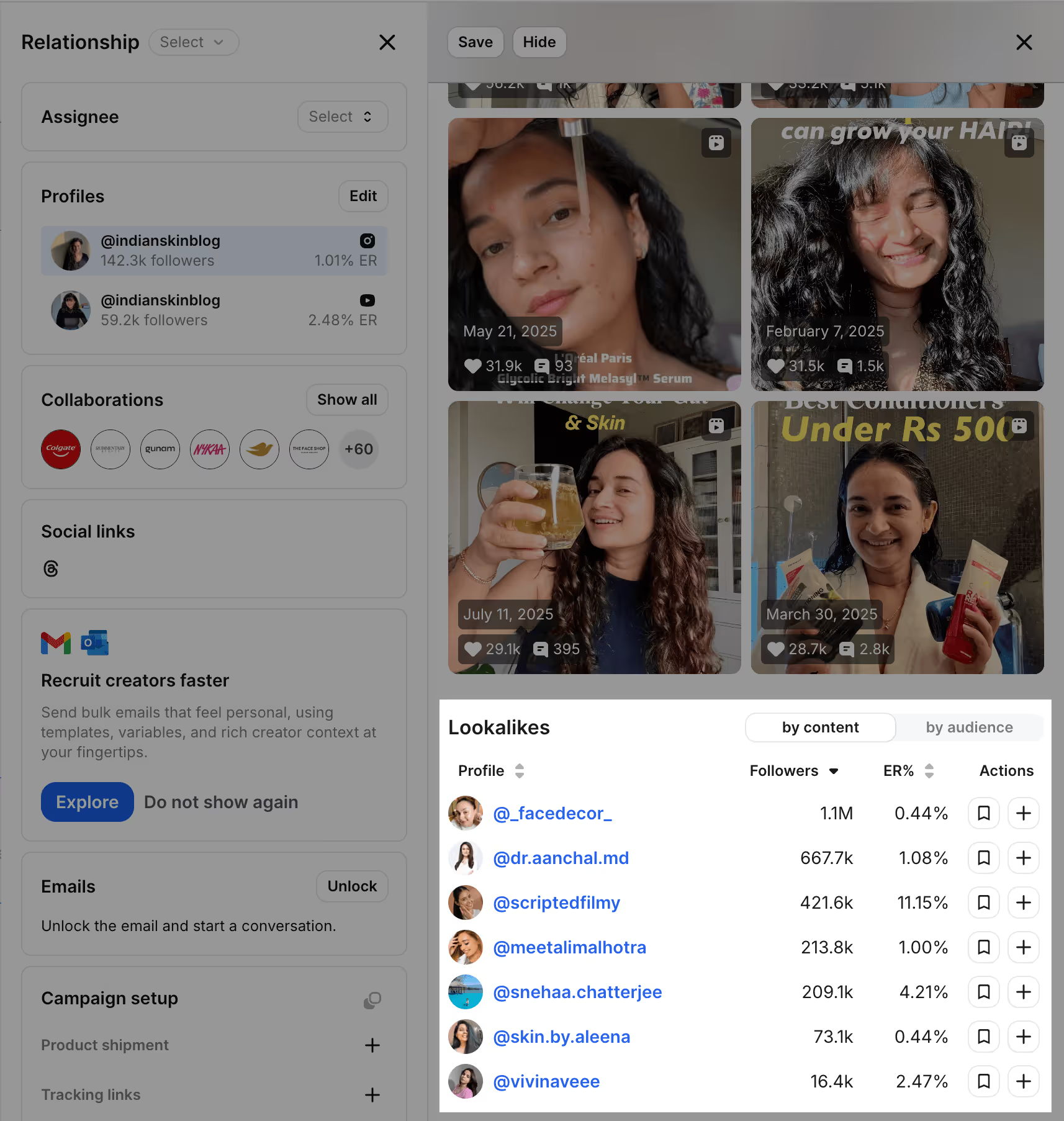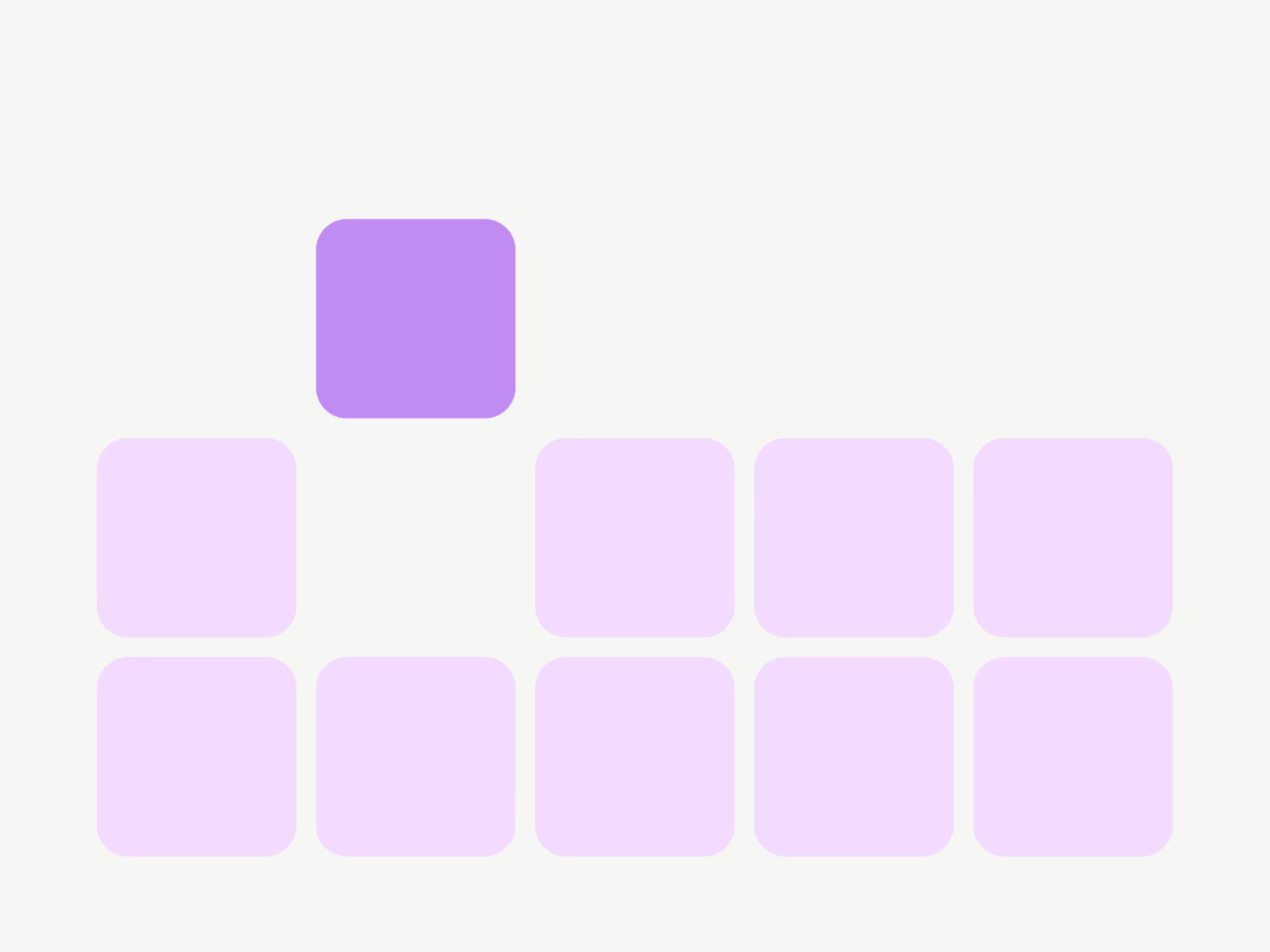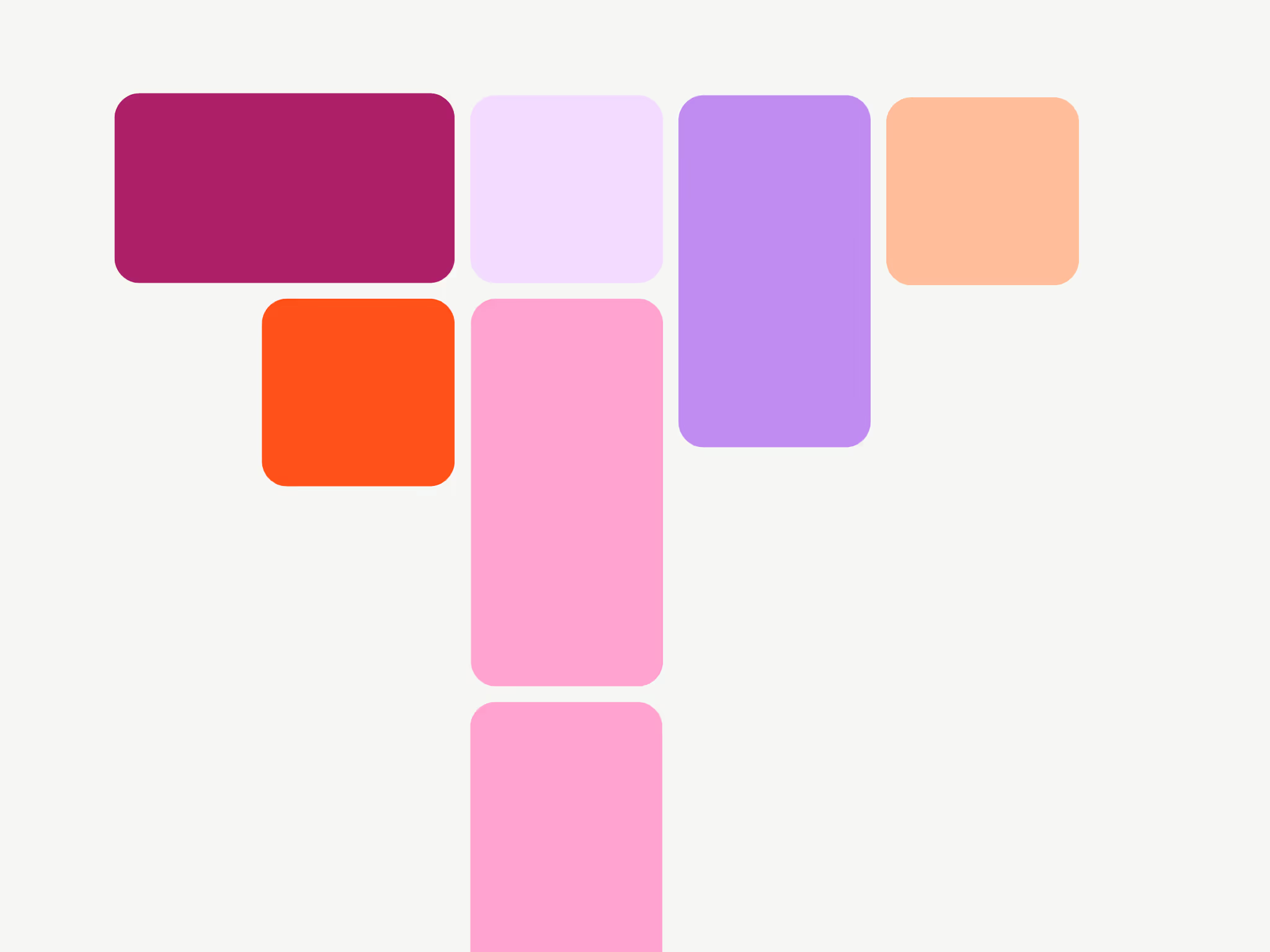Imagine this: you land the ✨perfect ✨influencer. They check all your boxes – right niche, right audience, flawless content. On paper, they’re a dream.
But when the post goes live, the vibe is just… off. No buzz. Few clicks. Low engagement. Even “perfect” influencers can underperform – and often for reasons you’d never expect.
If this has never happened to you, then avoid it at all costs! But when it does happen… it’s frustrating.
Below, I share the six most common reasons seemingly perfect influencers flop. Before you dive in, just know that sometimes, there’s no single, clear reason why a partnership fails. It’s not always straightforward, and things often look different in hindsight. In many of these stories, you’ll find that multiple reasons worked together to hijack a campaign’s performance.
Read on to find out how you can avoid (or make the most of) each situation. Let’s get into it!
1: It’s not you, it’s the algo
Sometimes, you do everything right, and the cards still don’t stack perfectly. Social media platforms frequently update their algorithms, which can impact how influencer content performs.
It happened to Nacho Selma, who picked an influencer with excellent content quality. Usually, the influencer’s content generated hundreds of thousands of views, and in some cases, millions. But this time? The reach halted at just 12K views. Of course, you can’t always blame the algorithm for lack of performance, but if everything else checks out, the algo can be the sneaky culprit.
Other times, it’s not the social network’s doing. Maybe some unexpected news took over the internet and crowded everyone’s feeds (looking at you, Taylor Swift and Travis Kelce). In those cases, the influencer content underperforms simply because the world’s attention – or that of your target audience – has been captured elsewhere.
Unfortunately, you can’t predict when social platforms will shift their algorithms or when a news piece will break the internet. There’s nothing you can do in your vetting process to mitigate this issue, either – there will always be a percentage of partnerships that fall flat.
Alycia Lykins agrees. She collaborated with an influencer who matched the niche and was a good fit for the product. But the partnership didn’t perform as expected – either the algorithm got in the way, or the audience just wasn’t into the product.
The good news is, there are steps you can take to recover lost ROI (or prevent this situation altogether).
How to tackle this situation
Negotiate a repost with the influencer. Request that the creator repost the same content at a different time. This will be easier if the influencer knows your performance expectations because they’ll be able to tell if they haven’t met them. It’s not an unreasonable request, but keep in mind some creators might ask for a small fee to repost.
Pause any scheduled content if a news story goes viral. If you notice a news piece dominating relevant social channels, consider postponing your content with creators. Doing so can give the collaboration a better shot at showing up in the feed – and succeeding.
2: The influencer didn’t put in enough effort or believe in the product
Like the previous scenario, this one is unpredictable. Michael Todner found a perfect creator whose metrics were all A+ on paper. Their past sponsored collabs generated sales, too – aligning with Michael’s brand goals. But this time, the influencer barely drove any clickthroughs or sales.
Like Michael, most marketers agree a creator will be a sure win if there’s a niche and audience match.

It’s a fair assumption to make. Alexander Sabucido learned the hard way: he found a creator with aligned demographics and content quality, but the post didn’t feel organic, so it didn’t get any traction or bring in a lot of revenue.
And in other cases, unfortunately, a creator is just plain unprofessional. For instance, Hope Wilson contracted with a well-known influencer whose audience was the perfect match for the book Hope was selling… but the creator had no accountability.
Nicole Ampo experienced this, too. She collaborated with a creator who fit the niche and had solid metrics. But when Nicole asked for a few revisions to the content, the influencer ghosted her. It’s worth noting their communication had red flags from the start.
While a few bad eggs is part and parcel of influencer marketing, you should take steps to avoid them as much as possible.
How to tackle this situation
Give influencers ample time to test your products. Both Michael and Alex suggest a workaround for “lack of belief in the product” – give the influencer enough time to use it! When creators can test the product and truly integrate it into their lives, their content will feel less like an ad. Michael says:
Get on a call with the influencer before onboarding. If you have time, arrange a quick call with each influencer before you move to the contract stage. Meeting virtually will help you catch red flags early.
But more importantly, a call will give you a feel for a creator’s enthusiasm about the product. If the creator has any concerns or hesitation, you can have an honest conversation at this stage. You’ll form a stronger relationship with them by proactively asking for feedback, and you’ll get a review of your product from someone who might have otherwise been a customer. And who knows – you might even convince them how awesome your product is, which makes for a great story! It happened with Cheyanne Pettyjohn:
3: The influencer didn’t have real (or enough) influence
Most marketers consider a collaboration a flop when the influencer didn’t get enough engagement on their post or when they didn’t bring in enough conversions.

But sometimes, a collaboration flops simply because a creator’s wheelhouse is in creating, not in influencing. Who among us hasn’t followed a creator purely for the entertainment value? We tune out their ads like white noise – we don’t have the trust needed to actually listen to their brand or product recommendations.
Tamara Torrecillas found one such creator – she was a good brand fit and had high engagement, but her post didn’t perform well in terms of brand awareness or conversions.
Gabija Jankauskė also collaborated with a creator who had aced the standard metrics and the brand style – but the partnership didn’t work because her audience was following her for the beautiful content, not for product recommendations.
For Leslie Belen, a creator’s high follower count didn’t translate to engagement or revenue, even though the creator had worked with similar brands in the past.
The lesson here isn’t that some influencers are great while others aren’t – far from it. Your influencer marketing strategy needs both “creators who make” and “creators who influence,” but you have to match each one to the right campaign and goal.
How to tackle this situation
Evaluate a creator’s true influence. You must go beyond the standard metrics when examining potential creator partners. Check the comments of their previously sponsored posts – do their followers show excitement in trying the new product? In their organic content, do people ask for product recommendations or compliment the production quality? Zoom in on what their relationship with their audience looks like. The qualitative check is just as important as the quantitative one.
Repurpose the content for other marketing assets. If the creator lacks sufficient influence, you likely chose them because they’re still excellent at making content. Repurpose what they create for you into other marketing assets such as ads, website pop-ups, testimonials, and user-generated content.
4: The collaboration post is sandwiched between other ads
It’s an undeniable fact that paid posts don't perform as well as organic ones. When your collab content goes live, a slight drop in engagement (compared to organic content) is expected. But if that creator’s profile is packed with other sponsored posts? Expect engagement to drop like flies.
It happened to Kat LaFata. She partnered with a creator who fit the criteria perfectly – both quantitative and qualitative. Though the content itself was absolutely fine, it got no views and no engagement because the creator had posted a lot of sponsored content that same week.
This can be an even bigger problem if you work with creators in the same niche (think skin care brands partnering with skin care creators). In that case, when your collab content is sandwiched between other paid posts, then your product is sponsored by your competitors.
Abdullah Khan experienced this when promoting earbuds with a creator who then featured competing brands soon thereafter. Abdullah’s audience alignment, video production quality, and high engagement went down the drain.
A similar incident happened with Beth Cortez when she partnered with a mom influencer to promote a loungewear brand. The brand had already seen success in past collaborations with mom creators, but the partnership flopped because this particular mom influencer had been promoting multiple fashion brands over the last few months.
How to tackle this situation
Include exclusivity in your contract. Put an exclusivity clause in your contract that prevents a creator from posting your partnership content next to competitors’. You can even extend it to be exclusive to paid content in general – at least for a short, specified period, for example, no other sponsored content within 48 hours of your collab post. Yes, it will cost extra, but it’s so worth it. Kat does this herself now:
Partner with storyfit influencers. Even if you aren’t boxed in next to your rival brands, same-niche creators will promote competing products sooner or later. It’s a good idea to add a few storyfit influencers to your creator pool. These are creators outside your immediate niche who can tell your brand story in a unique way. By diversifying your partnerships, your products get featured in a creator’s feed with no (or at least very few) rivals in sight.
5: There is an audience mismatch between your ICP and the influencer’s followers
Audience mismatch is the top reason marketers attribute to failed influencer collaborations.

But audience mismatch doesn’t just mean a misalignment in the basic demographics. It can also mean the influencer’s audience:
- didn’t have the buying power or interest to purchase your products
- needed more brand encounters to buy your products
- isn’t following them for product recommendations
We’ve already covered how a lack of influence can cause a perfect creator to underperform. Let’s understand how the remaining two subsets of audience mismatch can put a damper on your campaigns.
Take the case of Victor Wiśniowski. An on-paper perfect creator didn’t convert because their audience wasn’t interested in gaming or tech – the product categories Victor wanted the influencer to promote.
For Alice Arruda, the audience fit was there, but the customer journey needed more time and touchpoints:
You will likely need multiple touchpoints with each customer, even if you aren’t practicing influencer marketing for expensive products. I’m not saying people don’t buy things they see one time on a whim (hello to my 3 am impulse-purchase lip balms). However, most buyers need to come across your products multiple times before making a purchase.
An anonymous marketer, for instance, partnered with an excellent influencer who generated thousands of views and hundreds of clicks, but little to no conversions.
Maybe the partnership flopped because it was the first time the audience heard about the brand. The hidden win was that the influencer helped with brand awareness. Maybe a second or third collaboration could finally pay off.
How to tackle this situation
Check audience interests before collaborating. Metric monitoring isn’t the only vetting you should do. Qualitative assessment reveals the kind of relationship a creator has with their audience and what their followers are actually interested in, and you should use this information to decide whether or not to partner with them. Victor agrees:
You can also find audience interests in Modash when you’re evaluating a creator’s profile. In addition, check “Popular tags & mentions” to get a rough idea of the creator’s most-used hashtags and other brands they’ve worked with.

Convert your one-off partnerships into long-term collaborations. It’s tempting to declare that an influencer collaboration was a failure because it didn’t result in sales. But by nature of today’s typical customer journey, influencers need more time (and posts) to sell a product to their audience. If an influencer is performing well on the awareness front, give them a few chances before you call the whole thing off.
Find lookalike influencers. Not every touchpoint a customer has with your product needs to come from the same influencer. In fact, you should consider finding influencers with similar audiences even if you’re collaborating with a few creators for the long term. Why? When your ICP sees multiple influencers they follow rave about the same product, it builds trust and boosts your overall brand awareness (and ultimately, sales).
A super easy way to do this is to use Modash’s lookalike tool to find creators with similar audiences.

6: Brands provided too much input
There’s a delicate balance to strike when briefing influencers. You want to provide them with all the necessary guidelines to explain the benefits of your product, but not so much direction that you stifle their creativity.
Senith Berhane’s collaboration once flopped because of too much brand input.
I get it: you want your collaboration post to be exactly how you imagine it. But remember, the perfect influencer is perfect because of their own unique style and creativity. That’s what their audience loves them for.
How to tackle this situation
Offer your collab partners enough creative freedom. Giving creators room to make the content their own is the best way to ensure you don’t dampen their creativity. This is true even if the creator is a misfit. One of Namrata Thakker’s influencer campaigns succeeded with an imperfect creator because she loosened the reins:
But how do you ensure an influencer isn’t left in the dark and doesn’t create something completely off-brand? Tell them everything about the brand and your products, but leave the implementation part to them. Anna-Maria Klappenbach explains with the perfect analogy:
Fails that teach without the sting
Here are five important takeaways from the above examples:
1. Assess each influencer you partner with qualitatively, along with the quantitative metrics. Check if their audience interest matches with your target customers’, if they have true influence, and what their strengths are. If you can, get on a call before kickstarting the partnership.
2. Flopped posts – if the content is good – can still be repurposed into amazing marketing assets. Add usage rights into your contracts so you can make the most of a bad situation, too.
3. Give creators time to test your products so their content remains authentic and the promotion doesn’t come across as too salesy.
4. Invest in long-term creator collaborations and lookalike influencers to build awareness and trust with your target audience. Add storyfit influencers into your roster to keep things fresh and interesting.
5. Build padding into your contracts so your sponsored post isn’t sandwiched between other paid posts – especially from competitors.
There are tons of examples of perfect influencers who aced the assignment. But truth be told, failures often reveal (and teach!) more. Hopefully, these examples helped you learn how you can tackle the situation more productively.
With Modash, your job is even easier because you can vet creators beyond surface-level metrics and dig into real audience data. Try it for yourself at no cost (and no credit card) for 14 days.


.avif)



















